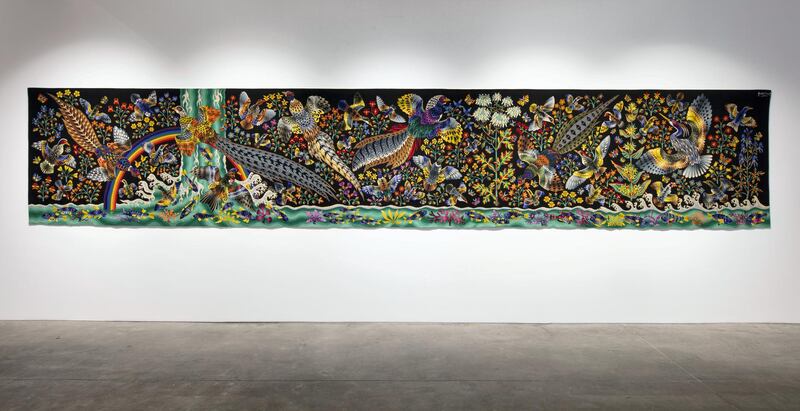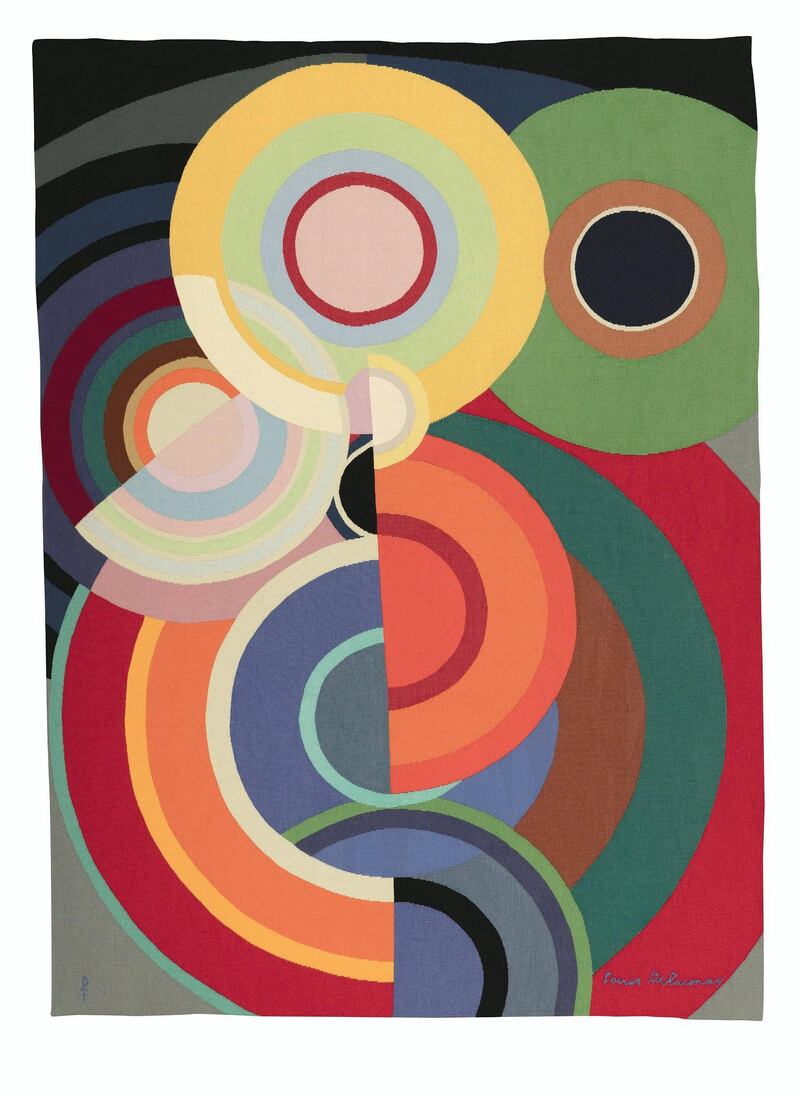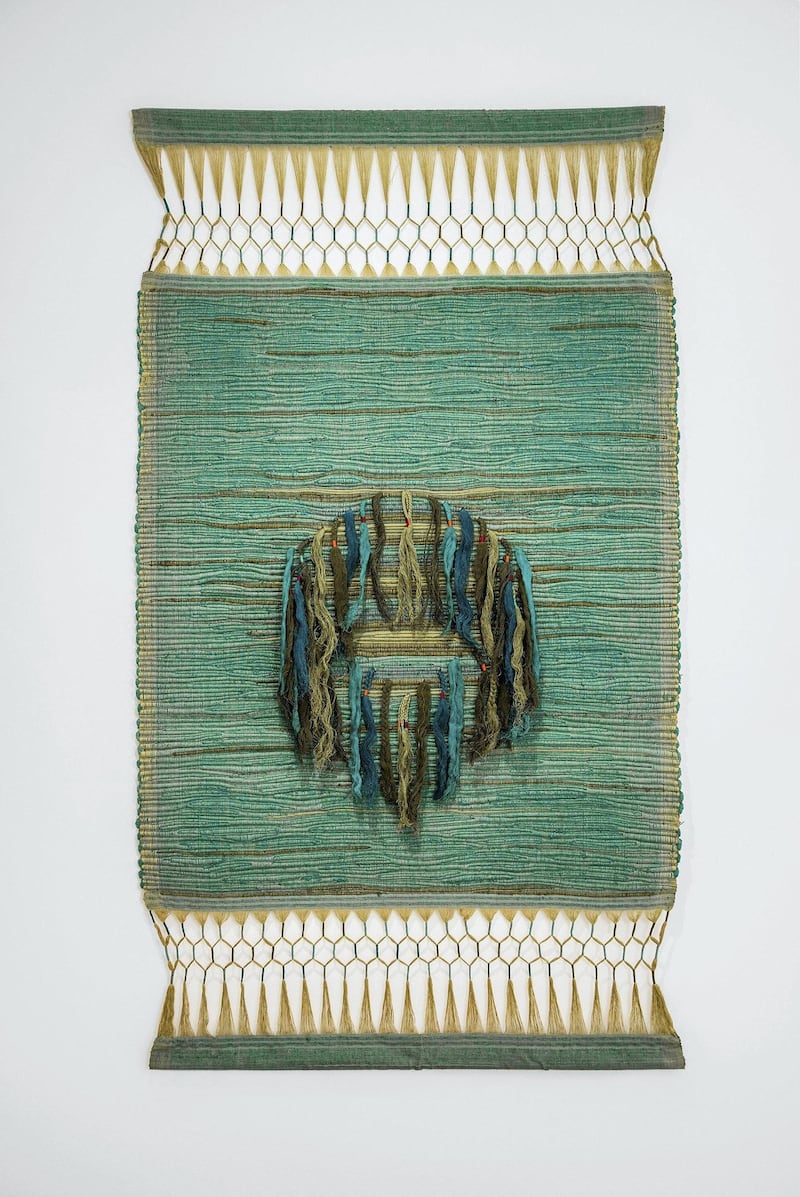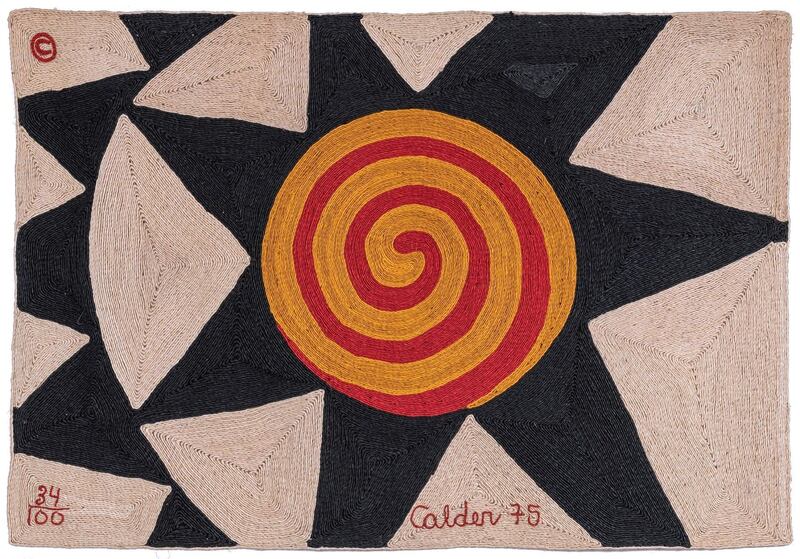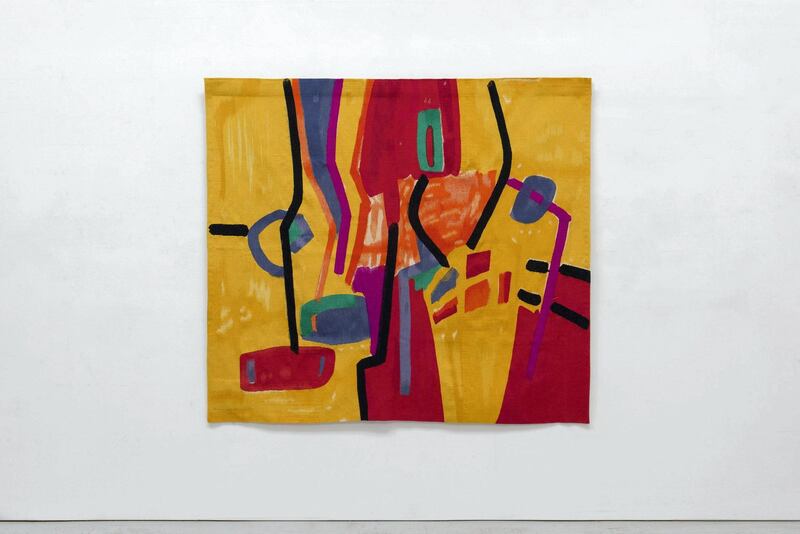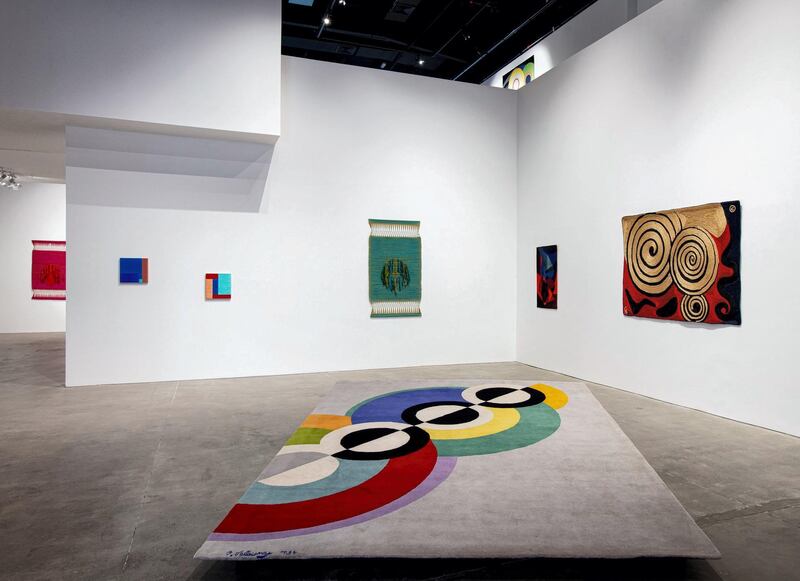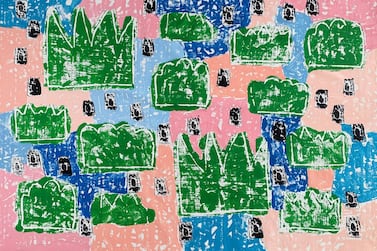A revival exhibition of textile art that includes works by renowned creators is coming to a close in Dubai on Thursday and is worth a visit if you haven't seen it already. The Tales of Thread retrospective – presented and curated by Laurence Custot and Isaure Bouriez – aims to bring textile arts "from the fringes of culture into the central fold of fine arts".
It attempts to do this by presenting 28 limited-edition tapestries, carpets and textiles by 18 international artists, including Arab-American Etel Adnan, Spanish Basque sculptor Eduardo Chillida, Catalan painter and printmaker Antoni Clave, French Orphism artists Robert and Sonia Delaunay, American sculptor Alexander Calder, French tapestry artist Jean Lurcat and the inimitable Pablo Picasso among others. The works explore textile art's history and evolution. Custot tells The National more about the threads that connect the past, present and future.
How did the idea for Tales of Thread come about?
I've always loved textiles. It is something that is present in every single culture all over the world, and I've always had an exhibition of this kind in the back of my mind. I wanted the work by textile artists to be more approachable and the idea was to showcase a range of tapestries and textile works in a way that would highlight the evolution of the art form. The exhibition is done in chronological order and features unique, limited-edition pieces, mostly from European artists. This is in keeping with the history of textile arts, which saw something of a rejuvenation in 1940s Europe. It was at the time that French artist Jean Lurcat had an extraordinary impact on the art form, putting tapestries in the limelight.
How much has the art form changed over the years?
Traditionally, textile art was between the weaver, the artist and the loom. The artist would create a drawing and the weaver would reproduce it using the loom. However, the 1960s saw a transformation of the artist into the weaver, which gave them greater artistic expression and freedom. In 1962, Jean Lurcat and Pierre Pauli held the first International Tapestry Biennial in Lausanne, an event that further contributed to the evolution of the art form and made it more mainstream. In that sense, I don't think textile arts can be considered niche any more. The rejuvenation of tapestries in the mid-20th century had a huge role to play, and today you can see textile art in major museums and galleries.
What message do these creations send to the viewer?
Every artist has their own approach and when they create a work, they are in a very specific frame of mind and, obviously, there is something specific they want to share. Take Alice Anderson; her work explores the essence of humanity. Her tapestries are put together using copper-coloured thread. The idea came about when she opened a piece of modern technology – a mobile phone – and discovered copper thread there. Modern technology is something that used to help connect us with each other, which is what led her to her journey of connection and communication. Her pieces point out how we are all connected.
Meanwhile, Sheila Hicks travelled a lot and was fascinated by traditional art. Her work takes a different approach by weaving together culture and tradition.
Then there are elaborate tapestries such as The Great Waterfall – an eight-metre-long creation by Rene Perrot, widely acknowledged as a master of tapestry design.
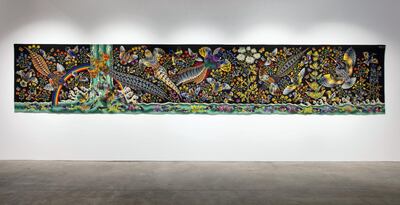
Tapestries such as these take months, if not years, to complete.
What is a project you’d like to take on in the future?
Honestly, the Middle East also has a rich history of textile arts; artists have traditionally created a lot of carpets. We have been questioning ourselves from the beginning over what goes into this exhibition, because the world of textile arts is so wide. The idea behind this exhibition was to showcase the evolution of textile art and its rejuvenation from France. Perhaps we can explore tapestries in the Middle East in another exhibition.
Tales of Thread is on at Custot Gallery Dubai until Thursday, March 5
